Today’s Current Affairs: 25th February 2025 for UPSC IAS exams, State PSC exams, SSC CGL, State SSC, RRB, Railways, Banking Exam & IBPS, etc
Table of Contents
HKU5-CoV-2:
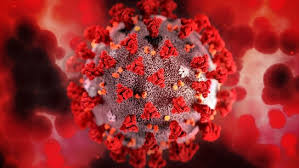
A newly discovered bat coronavirus, HKU5-CoV-2, similar to the virus that caused the COVID-19 pandemic, has been identified in China.
- AKU5-CoV-2 is a newly discovered Bat Coronavirus.
- It Closely Resembles The SARS-Cov-2, The Virus Behind COVID-19 Pandemic.
- It Belongs To The Merbecovirus Subgenus, Which Also Includes The Virus Responsible For Middle East Respiratory Syndrome (MERS).
- It Can Bind To Human ACE2 Receptors, Similar To SARS-Cov-2.
- This Suggests It Has The Potential For Animal-To-Human Transmission.
- HKU5-Cov-2 Has A Lower Binding Affinity To Human ACE2 Than SARS-Cov-2, And Its Ability To Infect Humans On A Large Scale Remains Uncertain.
- The Virus Binds Not Just To Human ACE2 But Also To Multiple Mammalian Species, Meaning It Could Spread Through An Intermediate Animal Before Reaching Humans.
- There Are No Confirmed Cases Of HKU5-Cov-2 In Humans Yet, So Its Symptoms Are Unknown.
- The Discovery Was Made By A Team Of Virologists Led By Shi Zhengli, Often Referred To As “Batwoman” For Her Extensive Research On Coronaviruses At The Wuhan Institute, China.
Andaman Sea : Earthquake
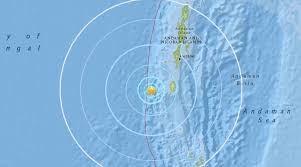
An earthquake of magnitude 5.2 struck the Andaman Sea recently.
- Andaman Sea is a semi-enclosed marginal sea in the northeastern Indian Ocean.
- It lies between the eastern coast of India and the Malay Peninsula, with Myanmar to the north and the Indonesian island of Sumatra to the south.
- The Bay of Bengal bounds the Andaman Sea to the west and the Strait of Malacca to the east.
- It is a complex geological region with a tectonically active plate boundary.
- It is part of the larger Sunda Plate, which the Indian Plate borders to the northwest and the Australian Plate to the southeast.
- The ongoing tectonic convergence between these plates has resulted in the formation of the Andaman Basin, characterized by undersea ridges, trenches, and faults.
- The most prominent geological feature in the region is the Andaman Trench, which is formed by the subduction of the Indian Plate beneath the Eurasian Plate.
- This tectonic activity has given rise to numerous earthquakes and volcanic eruptions in the region, making the Andaman Sea seismically active.
- It is home to extensive coral reef systems, sea grass meadows and mangrove forests, which provide critical habitats for a multitude of marine organisms.
- The Andaman Sea is also an important site for migratory birds, with several key stopover locations along the East Asian-Australasian Flyway.
Northern Pintail Duck:
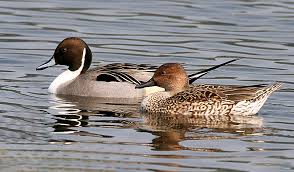
A flock of rare northern pintail ducks has been recently spotted at an unprecedented altitude of 13,500 feet in Tawang, Arunachal Pradesh.
- It is a graceful, migratory waterfowl celebrated for its striking appearance and fascinating behavior.
- Scientific name: Anas acuta
- Sometimes referred to as the northern nomads, northern pintails have extensive migratory routes.
- They have been found on every continent except Antarctica but typically do not live or breed south of the equator.
- They are named for their long central tail feathers ending in what appears to be a point.
- The male is a buff-gray color with a chocolate-covered head, a wide white strip on his chest and black patterning on his back.
- Females and non-breeding males are mottled brown with a light chest, and neck.
- These large ducks can reach over 60 centimeters long and weigh over one kilogram.
- Their wingspan spreads up to 91 centimeters.
- Their aerodynamic build makes them fast flyers, capable of reaching speeds up to 48 mph.
- In the wild, northern pintails can live up to 22 years
- Conservation Status: IUCN Red List: Least Concern
Bathouism:
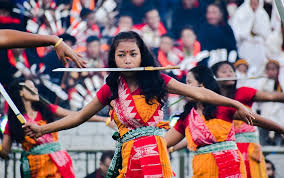
The Bodoland Territorial Council (BTC) in Assam has included ‘Bathouism’ as an official option in the religion column of various application forms.
- It is the traditional faith of the Bodos, the largest plains tribe of Assam.
- The word ‘Bathou’ is derived from the Bodo language, where ‘Ba’ means ‘five’ and ‘thou’ means ‘deep philosophical thought’.
- The faith system is based on five elements: Bar (Air), San (Sun), Ha (Earth), Or (Fire), and Okhrang (Sky).
- The community worships Bwrai Bathou as the supreme god. In the Bodo language, the word ‘Bwrai‘ refers to the ‘eldest’ man concerning power or knowledge.
- The Bathou faith is centred on the Sijou plant (Euphorbia splendens).
- In Bathou religion, the Sijou plant has an important place and has been widely accepted as the symbol of life or soul by the Bodo people since time immemorial.
- This plant is the living symbol of Bathoubwrai, the supreme God of the Bodos.
- Bodos plant the sijou tree on an elevated altar encircled with a bamboo fencing of eighteen pairs of posts weaved with five pieces of bamboo split.
- The five bamboo strips signify the five bindings of Bathou, viz. (i) birth, (ii) marriage or procreation, (iii) sorrow, (iv) happiness and (v) death.
Blue-cheeked Bee-eater:
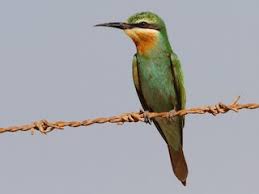
The first breeding site of the Blue-Cheeked Bee-eater (Merops persicus) in peninsular India has been discovered in the saltpans of Aandivilai near the Manakudy Mangroves in Kanniyakumari district.
- It is a near passerine bird in the bee-eater family, Meropidae.
- It was historically known as passage migrant and winter visitor in India.
- It may choose to nest solitarily or in small, loose colonies of up to ten individuals. It is also known to share colonies with European bee-eaters.
- Its breeding was primarily recorded in regions such as Nile Delta, Pakistan and Iran while its wintering grounds include parts of Africa.
- This bird favors sub-tropical semi-desert regions dotted with sparse trees, such as acacias, for breeding.
- In its breeding grounds, this species occupies semi-desert, steppe, dunes, saline pans, cultivation, thorn woodland and sandy slopes with small gulleys, ravines, quarries, pits and embankments.
- It breeds mainly in sand deserts near bodies of water fringed with reeds and tamarisks.
- During the non-breeding season, it inhabits a wide variety of greener habitats including savanna, broad river valleys, woods, lakeshores, swamps, ponds, dams, waterworks and cultivation.
- Conservation status: IUCN: Least Concern
Zagros Mountains:
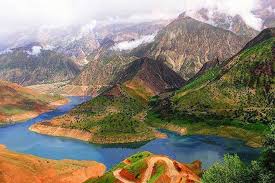
A geologist said that a hilly area surrounding the Zagros Mountains in Iraq is being pulled into Earth.
- Zagros Mountains is a major mountain range in West Asia.
- Scientists estimate that these Mountains were formed during orogenic episodes triggered by the sliding of the Arabian Plate underneath the Eurasian Plate during the Miocene and Pliocene Epochs.
- Historically, the Zagros Mountains have acted as a natural barrier between several cultures and empires of the ancient and modern worlds alike.
- It extends for a distance of 1,500 kilometers in a northwest to southeast direction from the border areas between eastern Turkey and northern Iraq across the Iranian Plateau, ending at the Strait of Hormuz in southern Iran.
- Mount Dena, with a peak achieving an elevation of 14,465 feet, is the highest peak in the Zagros Mountain system.
- The most commonly seen geological structural materials of the Zagros Mountains are Limestone and shale rocks from the Mesozoic Era and Paleogene Period.
- A semi-arid temperate climate prevails in the region, wherein the bitter winters are severely cold and experience deadly temperatures drop, while summers are highly arid.
- It consists of temperate broad-leaved forests, dominated by oak and pistachio trees, as well as dense ground covers of steppe vegetation.
Mount Dukono:
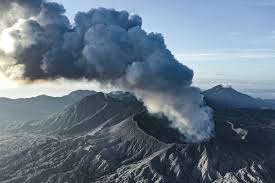
The Mount Dukono erupted which prompted the Indonesia’s Volcanology and Geological Disaster Mitigation Centre to issue an aviation warning.
- Mount Dukono is located in Indonesia’s North Maluku province.
- It is a complex volcano and one of the most active volcanoes in Indonesia.
- The volcano, situated on Halmahera Island, spewed a column of ash up to 2,000 metres into the sky, with thick white-to-grey clouds drifting south of the crater.
- It is standing 1,087 metres above sea level.
- It has been erupting continuously since 1933, with frequent ash explosions and sulfur dioxide plumes
Prime Minister Internship Scheme:

The Prime Minister Internship Scheme (PMIS) is once again open for applications with the launch of round 2 of the pilot phase.
- After more than six lakh applications in round 1, round 2 offers more than one lakh internship opportunities in top companies across more than 730 districts in India.
- The Prime Minister Internship Scheme (PMIS) is a significant initiative by the Government of India, aiming to provide 12-month paid internships to the nation’s youth in the country’s top companies.
- This program seeks to bridge the gap between academic learning and practical industry experience, thereby enhancing employability and skill development among young individuals.
- Individuals aged 21 to 24 who are not currently enrolled in any full-time academic program or employment.
- 2 months, combining relevant training with at least six months of professional experience.
- Each intern receives a monthly stipend of ₹5,000, supplemented by a one-time financial assistance of ₹6,000.
- Internships are available across various sectors, including Oil, Gas & Energy; Banking & Financial Services; Travel & Hospitality; Automotive; Metals & Mining; Manufacturing & Industrial; and Fast-Moving Consumer Goods (FMCG).
- Eligibility Criteria:
- Age: 21 to 24 years.
- Applicants should have completed their education and not be engaged in any full-time academic or employment activities.
- Minimum qualification of 10th, 12th grade, or an undergraduate degree, ITI, or other technical diploma
- Individuals enrolled in full-time studies or employment are not eligible.
Electronic Personnel License:
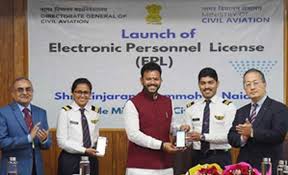
The Union Civil Aviation Minister launched Electronic Personnel License (EPL) for pilots.
- Electronic Personnel License is a digital version of a personnel license that will replace traditional physical licenses for pilots.
- It will be securely accessible via the eGCA Mobile Application, ensuring a seamless and transparent process in alignment with the Government of India’s “Ease of Doing Business” and “Digital India” initiatives.
- The introduction of EPL follows International Civil Aviation Organization’s (ICAO) Amendment 178 to Annex 1 – Personnel Licensing, which encourages Member States to adopt electronic licenses for improved security and efficiency.
- With this advancement, India becomes the second country globally to implement this advanced system, following approval from the International Civil Aviation Organization (ICAO).
- It is implemented by the Directorate General of Civil Aviation (DGCA).
- International Civil Aviation Organization is an intergovernmental specialized agency associated with the United Nations (UN).
- It was established in 1947 by the Convention on International Civil Aviation (1944) known as Chicago Convention.
Technology Adoption Fund:

The Indian National Space Promotion and Authorization Centre (IN-SPACe) has launched a new fund called Technology Adoption Fund.
- Technology Adoption Fund consists of a corpus of Rs 500 crore to support the growth of India’s space startups.
- This fund aims to accelerate the development of indigenous space technology, reducing reliance on imported solutions.
- The fund will offer financial support of up to 60 per cent of the project cost for startups and MSMEs, and 40 per cent for larger industries, with a maximum funding cap of Rs 25 Crores per project.
- It is also open to all eligible Non-Government Entities (NGEs)/companies that are ready to demonstrate the commercial potential of their innovations.
- It will also provide partial funding to NGEs. In addition to financial support, the initiative will provide technical guidance and mentoring opportunities, which will help companies navigate challenges during the product development phase.
- The fund will also support the transition of early-stage space technologies developed by Indian companies into commercially viable products.
- It is designed to enable “innovators to bridge the gap between early-stage development and commercialisation”.
- This support will enable companies to refine their technologies, enhance production processes, and meet market demands both within India and abroad.
- The fund will help promote advanced space technologies and contribute to job creation along with economic growth.
- With TAF, IN-SPACe aims to support a wide range of outcomes — from the development of new space products to the creation of intellectual property that can drive future research and development.
- It will invest in domestic research and development and strengthen collaboration between government agencies and the private sector, positioning India as a key global player in the space industry.
Climate Risk Index 2025:
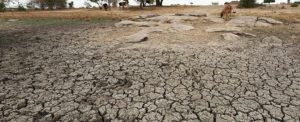
The international environmental think tank ‘Germanwatch’ has released the Climate Risk Index (CRI) 2025.
Findings of Climate Risk Index 2025:
- Between 1993 and 2022, over 765,000 lives were lost, resulting in economic losses of USD 4.2 trillion.
- The floods, droughts, and storms were the leading causes of global displacement.
- In 1993-2022, Dominica, China, and Honduras were the top-3 countries affected by extreme weather events.
- Myanmar, Italy, and India were among the other highly impacted countries.
- Pakistan, Belize, and Italy were the top-3 affected in 2022.
- 7 of the 10 worst-affected countries are low- and middle-income countries (LMICs).
- Impact on India: India ranked 6th most affected country (1993-2022), accounting for 80,000 fatalities (10% of global) due to extreme weather events and 4.3% of global economic losses (USD 180 billion).
- India has faced severe floods (1993, 2013, 2019), intense heat waves (~50°C in 1998, 2002, 2003, 2015), and destructive cyclones like Gujarat (1998), Odisha (1999), Hudhud (2014), and Amphan (2020).
- Climate Risk Index ranks countries based on their vulnerability to extreme weather events, assessing human and economic losses caused by climate-induced disasters.
- Released annually since 2006, covering data from the past 30 years.
- CRI assesses the impacts of extreme weather events on countries across six key indicators: economic losses, fatalities, and affected people, both in absolute and relative terms.
Majorana 1:

Microsoft has introduced Majorana 1, the world’s first quantum chip powered by a Topological Core architecture, which aims to revolutionize quantum computing.
- It is the first quantum chip to utilize a Topoconductor (Topological Superconductor), creating a new state of matter beyond solids, liquids, or gases, but a topological state.
- It is composed of indium arsenide (a semiconductor) and aluminum (a superconductor), enabling enhanced quantum stability and performance.
- The chip relies on Majorana fermions that act as their own antiparticles.
- It features eight qubits, but its Topological Core architecture enables error-resistant scaling to one million qubits, ensuring stable quantum computations.
- Unlike classical computers using binary bits (0s and 1s), quantum computers use qubits, which exist in multiple states simultaneously, enabling exponentially faster computations.
- Could help in breaking down microplastics, creating self-healing materials, improving healthcare solutions, and solving complex chemistry and materials science problems.
First BioBank in a Zoo:
India’s first wildlife bio-bank at Padmaja Naidu Himalayan Zoological Park (Darjeeling Zoo) is fully operational.
Since its establishment in July 2024, it has collected DNA and tissue samples from 60 animals of 23 species, prioritizing endangered species.The biobank (frozen zoo) preserves genetic material from animals for conservation and research. This includes cells, tissues, and reproductive samples of endangered and deceased animals. The samples are stored in cryogenic conditions (-196°C in liquid nitrogen) to maintain genetic diversity. It is part of a national conservation plan, in collaboration with the Centre for Cellular and Molecular Biology (CCMB), under the Ministry of Science and Technology. In future, biobanks are planned to be set up at Delhi National Zoo and Nandankanan Zoo (Odisha). Species like the American black-footed ferret and northern one-horned rhino have been revived using preserved DNA and captive breeding.
India China Ministerial Meet:
External Affairs Minister S. Jaishankar met Chinese Foreign Minister Wang Yi on the sidelines of the G-20 Foreign Ministers’ meeting in Johannesburg. Discussions focused on maintaining peace and tranquillity along the Line of Actual Control (LAC). Both sides emphasized the need for stability in border areas.Resumption of the pilgrimage was a key agenda item. India sought China’s cooperation to facilitate the yatra.Talks included improving flight connectivity and travel facilitation. Enhanced connectivity was seen as vital for bilateral ties.Both sides addressed issues related to shared river waters. India raised concerns over China’s dam-building activities.
Rupee & Dollar Swap Auctions:
RBI announced a $10 billion USD/INR buy/sell swap auction to inject ₹86,000 crore into the banking system.It is a tool used by RBI to manage liquidity in the economy and stabilize currency volatility. Banks sell US dollars to RBI in exchange for rupees in the first leg and agree to repurchase dollars at a future date. The Reserve Bank of India (RBI), as part of its monetary policy interventions, executes the swap auctions.
World Day of Social Justice 2025:
The United Nations (UN) observed World Day of Social Justice (WDSJ) on 20th February 2025 advocating against poverty, exclusion, and unemployment while promoting equality and solidarity. The 2025 theme of WDSJ, “Empowering Inclusion: Bridging Gaps of Social Justice,” focuses on inclusive policies and social protection, while highlighting the importance of “Strengthening a Just Transition for a Sustainable Future.”It is an initiative of the UN specifically led by the International Labour Organization (ILO) to promote social justice, equality, human rights, and fair opportunities for all. It was designated by the UN General Assembly on 26th November 2007
Sabyasachi Kar Named Director of Institute of Economic Growth:
Professor Sabyasachi Kar has been appointed as the new Director of the Institute of Economic Growth (IEG), New Delhi, effective February 6, 2025. He takes over from Professor Chetan Ghate, bringing with him vast academic and policy-making experience. IEG, known for its contributions to economic and social research, plays a key role in shaping India’s economic policies, and Professor Kar’s leadership is expected to strengthen its impact further.
Mopa Airport Wins Prestigious ‘Sarvashrestha Suraksha Puraskar’:
Manohar International Airport (GOX), developed and operated by GMR Goa International Airport Ltd. (GGIAL), has made history by becoming the first airport in India to receive the esteemed “Sarvashrestha Suraksha Puraskar (Golden Trophy)” at the National Safety Council of India (NSCI) Safety Awards 2024 under the ‘Service Sector’ category. The award was conferred during a ceremony held in The Lalit, Mumbai.




